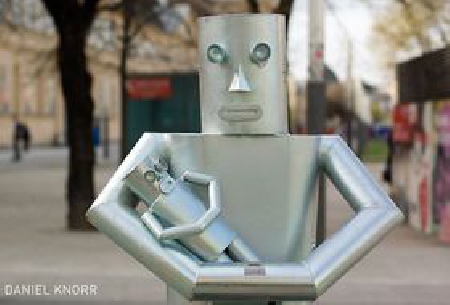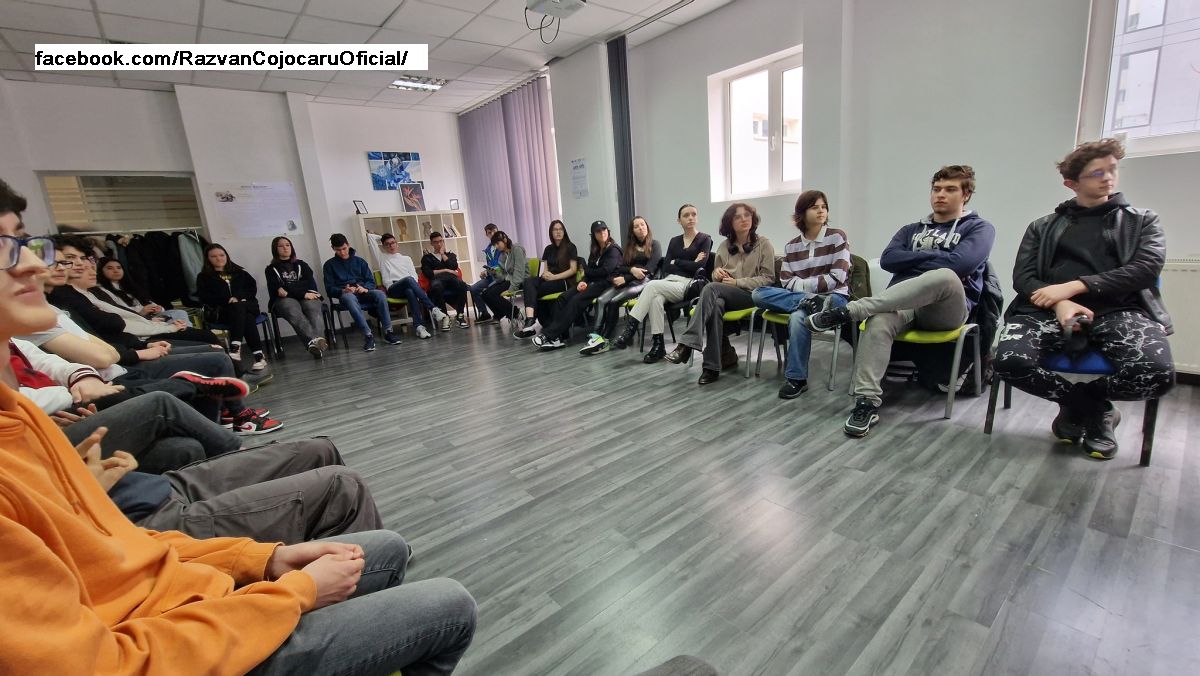Daniel Knorr and the Robot Beggars
Much has been written about Romanian beggars abroad. One piece of news, however, involves a stranger angle to this story: robots beggars. The robot in question can be seen in Mariahilfer Strasse, Viennas most crowded thoroughfare.

Eugen Cojocariu, 29.04.2012, 17:57
Much has been written about Romanian beggars abroad. One piece of news, however, involves a stranger angle to this story: robots beggars. The robot in question can be seen in Mariahilfer Strasse, Vienna’s most crowded thoroughfare.
The Romanian-born Artist Daniel Knorr, currently based in Berlin, is the person behind the robot. We asked the artist more about how the project came about:
“In 1999 I was invited to take part in an exhibition in Bern, Switzerland, and I was assigned to create something for the public space. While on a visit there I found out that beggars were to be chased away from the city center because they tarnished the image of the city. And I thought I could do something, since begging has existed since times immemorial. So I thought about making a robot beggar, so that I could help beggars become industrialized, if I can put it like that. Then I was invited to all sorts of exhibitions and I created different generations of robots. The one in Vienna is the fourth or the fifth robot that came out in that series.”
Despite the fact that Knorr’s project is obviously extremely tongue-in-cheek and satirizing the whole problem of beggars, Daniel Knorr’s creation was extremely successful, quickly won a sizable group of admirers. Speaking again is Daniel Knorr:
”I had al sorts of reactions. In a museum in Essen in 2002, people said theyd rather give money to the robots than to flesh-an-blood beggars, as robots don’t smell, they don’t look ugly. People here were the first people to purchase a robot beggar. I thought it was so neo liberal for the public to do that, but I also was a bit upset. But that’s the way it goes in today’s society… I thought the robot was perfect for the trade to be industrialized. It is also the envisaged outcome of something that happens every day. Every day we all beg for food somehow, even if we have something to eat, we beg for something just for the satisfaction of it.”
The robot fits in with the theme of the exhibition in which Daniel was taking part, as proposed by the curators, namely:” At Your Service — Art and Labor”. One of the curator’s requisites was that through their work artists should illustrate the way in which the work process is becoming automated. Among the suggested topics was the way work boosts your self-esteem, and can be seen as a pleasure or burden, and also how it influences one’s professional life. The Romanian-born artist persuaded the curators his beggar robots were worth taking a look at – and over time, created several versions of them.
“The first generation model of Robot beggars was a robot with a dog, and if you happened to walk past it, the robot reacted through a photoelectrical cell and said, ”You look good. Got a dime to spare?” And if you give it money, it bids you ‘good day’. And the dog was barking all the time. Then I made one like a terminal, something simpler, which worked on the same principle. The one in Vienna thanks you and wishes you ‘a good day’.”
I asked Daniel Knorr if people understand that his begging robots are in fact works of art.
“Art is complicated, since when you’re walking on the street, you don’t expect to come across a work of art. All that is placed on a pedestal and has an abstract nature becomes a work of art but it can be anything, even an initiative belonging to a firm, a commercial, so I don’t think people perceive that something is thought out like a work of art. But the idea conveyed to the public is the industrialization of begging, the last sphere of our world that wasn’t industrialized. In my art the robots’ orientation has very much to do with the wish to materialize things. Isaac Asimov invented the three laws of robots, and the third law says that robots will have to support themselves, which made me think of how robots might look, and what they could do. Scientists took over those laws of the robots. They exist in engineering.”
During the last week of April, Daniel Knorr will be coming to Bucharest with a new exhibition, hosted by the Museum of Contemporary Art. This time the artist has prepared a “pigsty with dollars”. It consists of several origami little pigs, made of large dollar bills, their dimensions ranging from 50 centimeters to larger models.






























